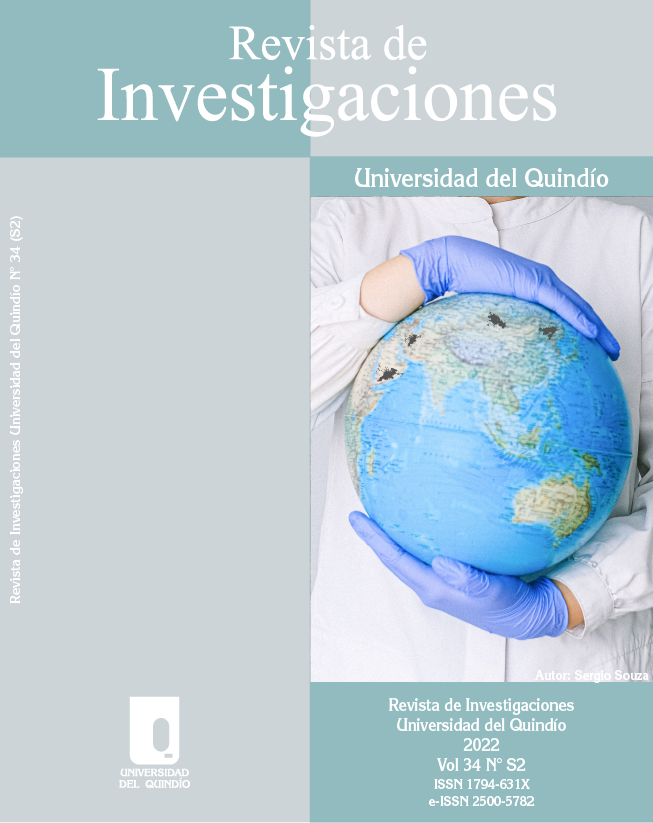Langue at work: una revisión y comparación de las teorías narrativas en la literatura
DOI:
https://doi.org/10.33975/riuq.vol34nS2.1144Palabras clave:
Teorías narrativas, narratología, estructuralistaResumen
Durante sus primeras fases estructuralista y tipológica, la narratología enfrentó muchas dificultades para relacionar la teoría con la práctica. El estudio de los textos narrativos es tanto una ciencia aplicada como una teoría por derecho propio. Su desafío crítico como narratología aplicada es ‘¿Y qué?’ ¿Por qué necesitamos todas estas subcategorías para comprender textos? La narratología ha sido criticada por no producir lecturas significativas como teoría, como la deconstrucción o el psicoanálisis lacaniano. El objetivo principal de este artículo es buscar explorar las dimensiones narratológicas de la literatura y comparar las teorías narrativas basadas en visiones estructuralistas. Para lograr este objetivo, primero se ofrece una breve historia de la narratología para brindar la oportunidad de discutir la estructura y los líderes del movimiento narratológico, y luego se examina toda la discusión estructuralista de la narratología, sus conceptos, el procedimiento y los practicantes. Según los resultados, la narratología estructuralista engloba la apertura de un camino al lenguaje de una narración y, por tanto, la decodificación del lenguaje para actuar sobre su significado.
Descargas
Citas
Barthes, R., & Duisit, L. (1975). An introduction to the structural analysis of narrative. New literary history, 6(2), 237-272.
Batbaatar, E., Dorjdagva, J., Luvsannyam, A., & Amenta, P. (2015). Conceptualisation of patient satisfaction: a systematic narrative literature review. Perspectives in public health, 135(5), 243-250.
Bremond, C., & Cancalon, E. D. (1980). The logic of narrative possibilities. New Literary History, 11(3), 387-411.
Bressler, C. E. (1999). An introduction to theory and practice. New York: Prentice-Hall, Inc.
Crespo, M., & Fernández-Lansac, V. (2016). Memory and narrative of traumatic events: A literature review. Psychological trauma: Theory, research, practice, and policy, 8(2), 149.
Davis, R. C. (1984). Structural Semantics: An Attempt at a Method. Nebraska: University of Nebraska Press,. Print.
Fludernik, M. (2009). An introduction to narratology. Routledge.
Genette, G. (1980). Narrative Discourse. An Essay in Method. Oxford: Blackwell, Print.
Greimas, A. J. (1987). On Meaning: Selected Writings in Semiotic Theory, trans. Paul Perron and Frank Collins, Minneapolis: University of Minnesota.
Herman, D. (1998). Theories of fiction and the claims of narrative poetics.. Poetics Today 19,4, 597-607. Print.
Lodge, D., & Wood, N. (2014). Modern criticism and theory: A reader. Routledge.
McQuillan, M. (Ed.). (2000). The narrative reader. Psychology Press.
Mitchell, M. C., & Egudo, M. (2003). A review of narrative methodology (No. DSTO-GD-0385). Defence Science and Technology Organization Edinburgh (Australia) Land Operations Div, 1-5.
Phelan, J., & Rabinowitz, P. J. (Eds.). (2008). A companion to narrative theory. John Wiley & Sons.
Ruparel, N., Bhardwaj, S., Seth, H., & Choubisa, R. (2023). Systematic literature review of professional social media platforms: Development of a behavior adoption career development framework. Journal of Business Research, 156, 113482.
Siddaway, A. P., Wood, A. M., & Hedges, L. V. (2019). How to do a systematic review: A best practice guide for conducting and reporting narrative reviews, meta-analyses, and meta-syntheses. Annual review of psychology, 70, 747-770.
Varadarajan, U., & Dutta, B. (2021). Models for narrative information: a study. arXiv preprint arXiv:2110.02084.
Wong, G., Greenhalgh, T., Westhorp, G., Buckingham, J., & Pawson, R. (2013). RAMESES publication standards: Meta‐narrative reviews. Journal of Advanced Nursing, 69(5), 987-1004.
Descargas
Publicado
Cómo citar
Número
Sección
Licencia
Derechos de autor 2022 Revista de Investigaciones Universidad del Quindío

Esta obra está bajo una licencia internacional Creative Commons Atribución-NoComercial-SinDerivadas 4.0.


